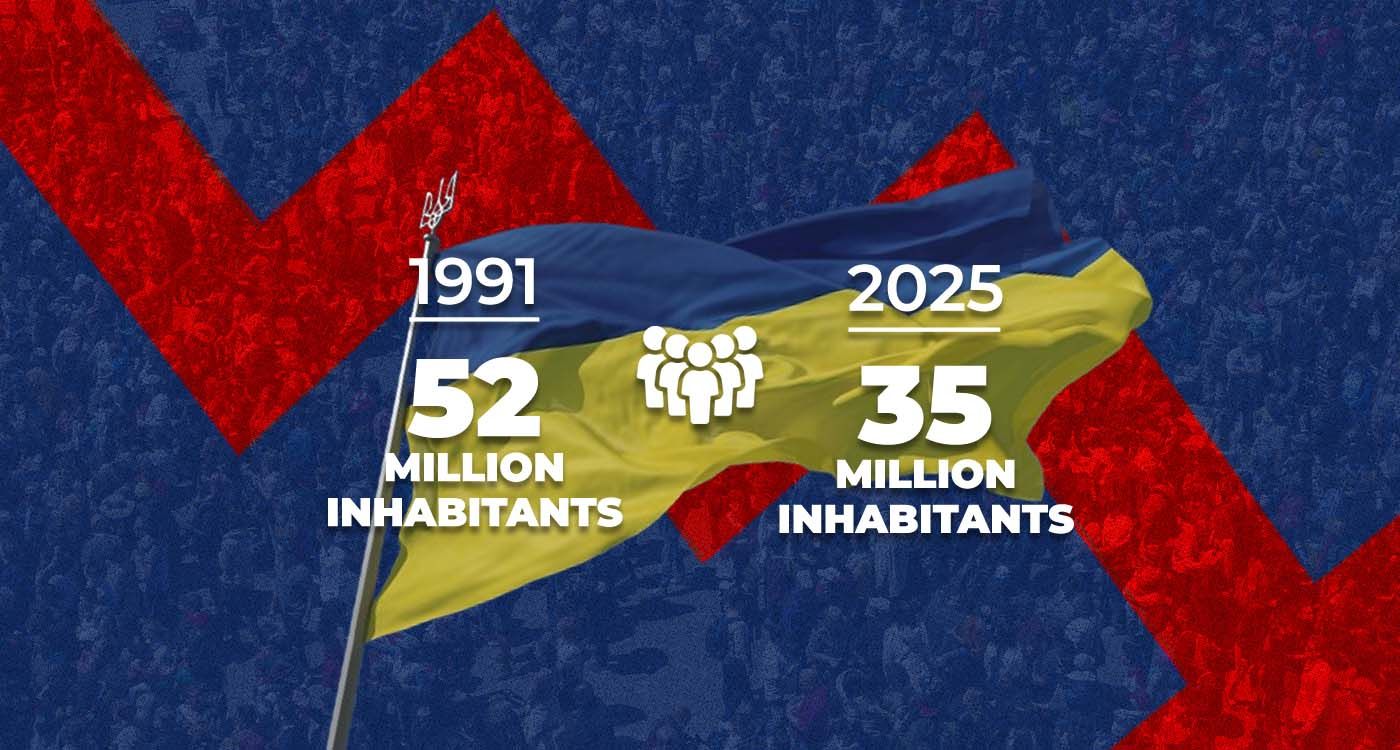- Home
- Middle East
- Ukraine Has Lost Almost Half Its Population Since 1991

©This is Beirut
The demographic crisis that Ukraine has been suffering from for decades has worsened over the past three years. After the collapse of the USSR in 1991 and the country’s independence a year later, Ukraine had approximately 52 million inhabitants. Today, the Ukrainian population is estimated at nearly 35 million, according to the United Nations Population Fund (UNFPA). This decline has accelerated since Russia’s annexation of Crimea in 2014 and the Russian invasion of 2022. These events have led to the loss of nearly 10 million citizens in the span of a decade, including eight million in just three years of war. Ukraine has lost a quarter of its population ver three decades. Beyond armed conflicts, this demographic decline is also due to a drastic drop in birth rates, an aging population, massive emigration, unemployment, rampant inflation, as well as deeply endemic clientelism and corruption.
Emigration and Birth Rates
Following the collapse of the Soviet Union, Ukraine experienced a period marked by difficult economic transitions. The country abruptly shifted from impoverishing communism to anarchic liberalism, characterized by privatizations, rising unemployment and rampant inflation. Moreover, the conditions were ripe for widespread clientelism and corruption, which continue to plague the country. Ukrainians were therefore forced to emigrate, particularly to Europe and the United States, in search of better opportunities. The most disadvantaged had no other option but to remain despite precarious conditions. After Russia’s launch of the “special military operation” in Ukraine on February 24, 2022, Ukrainian President Volodymyr Zelensky called for general mobilization and declared martial law. Ukrainians fled the country to escape forced military enlistment or due to displacement and the war’s disastrous economic consequences. Russian forces regularly targeted energy facilities, plunging part of the population into cold and near-total darkness, pushing some Ukrainians to move within the country. Furthermore, both Ukrainian and Russian authorities do not disclose the exact number of people killed or residential units destroyed by the war, making an accurate census difficult at this time.
On January 16, 2025, the United Nations Refugee Agency (UNHCR) recorded 6.8 million Ukrainian refugees worldwide, including 6.3 million registered in Europe. Moreover, alongside its aging population, Ukraine has one of the lowest fertility rates in the world. According to the latest UN reports, the birth rate currently stands at about one child per woman, far below the population replacement threshold of 2.1 children per woman. This is one of the lowest figures globally. This decline is primarily due to limited access to healthcare, the influence of social norms and an often-unstable work environment.
Repercussions, Short and Long Term
This demographic crisis will have significant economic, social and military repercussions, both in the short and long term. The decline in the working-age population due to the massive emigration of young talent would lead to labor shortages in key sectors of the country, which would slow economic growth. Such a shortage would drive up wages and production costs while reducing domestic demand. In 2020, more than 25% of Ukraine’s population was 60 and above, a figure that continues to rise. The aging population will further strain public finances, making it more difficult to fund pensions and social services for the elderly. On the military front, the shrinking young generation affects the country’s defense capabilities amid an unprecedented war. Kyiv will have to reorganize its army in terms of human potential. Several options are being considered: recruiting foreign contract fighters, replacing casualties and the wounded with new local recruits, etc. As the fighting continues, this regressive trend does not seem likely to reverse in the coming years. Ukrainian Minister of Social Policy Oksana Zholnovych even predicts a further decrease of 10 million inhabitants by 2050, which would represent a 50% population loss over 60 years.
Read more





Comments